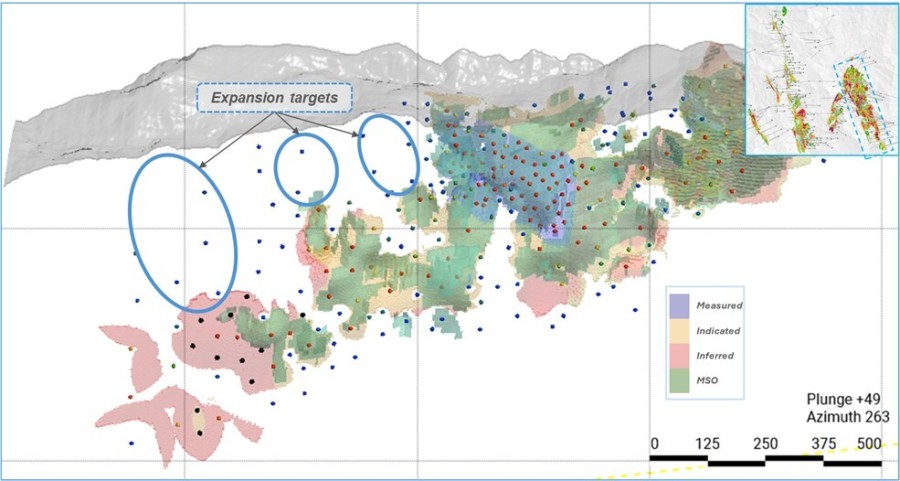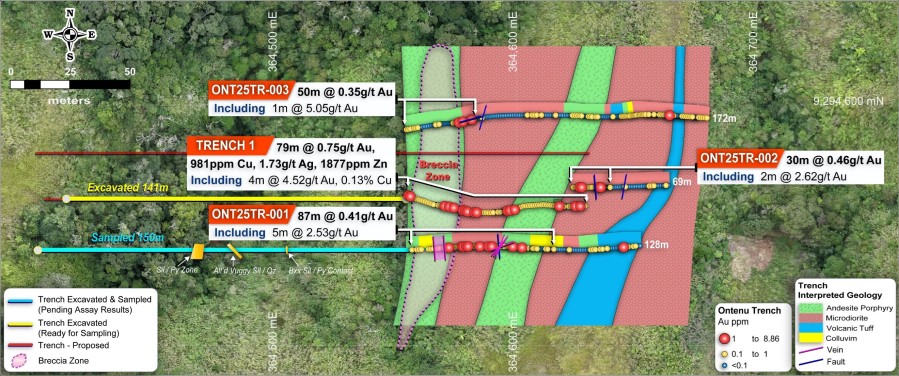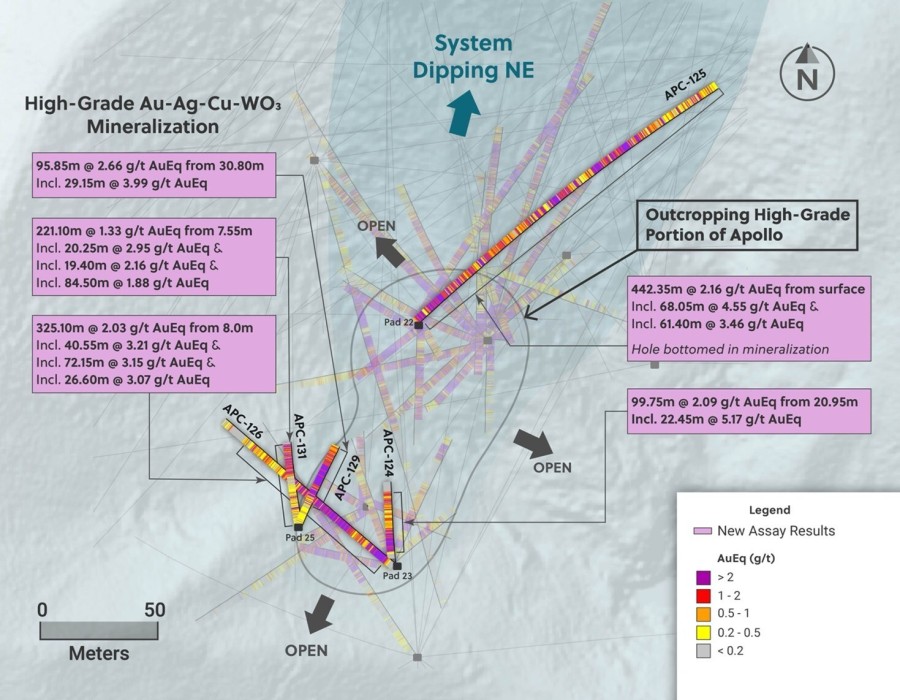TORONTO, ONTARIO--(Marketwired - Oct. 5, 2017) - First Cobalt Corp. (TSX VENTURE:FCC) (OTC:FTSSF) (the "Company") is pleased to announce the initial results from a mineralogical assessment of sample material from various historical mines throughout the Cobalt Camp in Ontario, Canada.
Highlights
- High grade vein style mineralization containing up to 9.22% cobalt and over 5,300 g/t silver found in muckpiles throughout the Cobalt Camp can be considered representative of historic mineralization styles and useful for mineralogical tests
- Similarity of cobalt minerals in all types of veins allows for a consistent processing system for the various deposits throughout the camp
- Disseminated and fracture-controlled mineralization styles, as found at the Bellellen and Haileybury Mines, with cobalt values of 0.25% and 0.5% occur in the same mineral phases, thus can be processed using one system
- While generally lower in abundance, there may be opportunities for the metallurgical recovery of copper and nickel
Trent Mell, President & Chief Executive Officer, commented:
"We are finding high grade values in various mineralization styles, including disseminated and fractured mineralization styles, which is supportive of our strategy for the Cobalt Camp. In addition, these mineralogical test results are encouraging as they suggest that both cobalt-rich and silver-rich mineralization styles may be processed using similar flowsheets. The Cobalt Camp is rich with muckpiles located in proximity to historic mines and they provide an opportunity to study discarded material previously mined underground without the additional cost of drilling. The results of this study support further work to assess the muckpiles for processing, and they could potentially be a future source of initial ore."
Program Overview
On conclusion of the mergers with Cobalt One Ltd. and CobalTech Mining Inc. (previously announced June 26, 2017) First Cobalt will have a small mill and a permitted refinery facility. Historical mining in the Camp was focused on the production of silver with cobalt as a secondary revenue stream. Surface muckpiles such as those found on the past producing Bellellen Mine (see September 28, 2017 press release) are known to contain cobalt, silver, nickel and copper. First Cobalt has abundant stockpiles on its property.
The mineralogical assessment is intended to quantify modal mineralogy in representative samples of different mineralization styles and report specifically on the deportment of cobalt, silver and nickel. These results are an important first step to developing a metallurgical process for optimal cobalt recovery at these facilities.
Six representative samples of variably textured mineralization styles from surface muckpiles throughout the Cobalt Camp were submitted to XPS Consulting and Testwork Services in Sudbury, Ontario for mineralogical assessment by QEMSCAN (Quantitative Evaluation of Materials by Scanning Electron Microscope) and EPMA (Electron Probe MicroAnalysis).
Assays for the samples studied are as follows:
Table 1. Analytical Test Results
| Mineralization Style | Sample | Co (%) | Ag (g/t) | Ni (%) | Cu (%) |
| Vein - Silver | 1 | 8.34 | 5,330 | 5.15 | 0.30 |
| Vein - Cobalt | 2 | 9.22 | 31.1 | 0.05 | 0.06 |
| Vein - Cobalt | 3 | 7.22 | 67.9 | 0.08 | 0.45 |
| Disseminated | 4 | 0.50 | 154 | 0.09 | 0.91 |
| Fracture | 5 | 0.25 | 19.9 | 0.04 | 0.32 |
| Stockwork | 6 | 0.03 | 0.5 | 0.01 | <0.005 |
The assays demonstrate the range of metal grades that occur throughout the Cobalt Camp.
Mineralogy and Deportment
The cobalt deportment is based on calculations from QEMSCAN and EPMA analyses. Deportment quantifies the number of mineral phases that are present within a sample; fewer phases are ideal for a consistent processing system.
Table 2. Cobalt Deportment
| Mineralization Style | ||||||
| Mineral Phases | Vein Silver |
Vein Cobalt |
Vein Cobalt |
Disseminated | Fracture | Stockwork |
| Sample # | 1 | 2 | 3 | 4 | 5 | 6 |
| Skutterudite | 67.90 | 84.52 | 12.89 | 0.08 | 16.47 | 2.81 |
| Safflorite | 8.92 | 0.96 | 71.81 | 0.01 | 0.21 | 0.18 |
| Glaucodot | 8.82 | 14.03 | 0.45 | 75.90 | 79.34 | 92.51 |
| Pyrite | 0.00 | 0.00 | 0.00 | 20.94 | 0.24 | 0.04 |
| Gersdorffite | 3.08 | 0.00 | 0.01 | 0.70 | 0.51 | 1.41 |
| Lollingite | 0.56 | 0.27 | 14.55 | 0.52 | 3.17 | 1.90 |
| Chathamite | 0.50 | 0.00 | 0.00 | 0.00 | 0.01 | 0.00 |
| Nickelskutterudite | 10.04 | 0.00 | 0.00 | 0.05 | 0.00 | 0.01 |
| Arsenopyrite | 0.19 | 0.22 | 0.25 | 1.80 | 0.03 | 1.13 |
| Tetrahedrite | 0.00 | 0.00 | 0.03 | 0.00 | 0.00 | 0.01 |
| Total (mass % Co) | 100 | 100 | 100 | 100 | 100 | 100 |
Fracture-controlled and disseminated styles represent types of mineralization where metallic minerals occur outside of veins that are potentially amenable to bulk mining methods. The dominant Co mineral is glaucodot (Co,Fe)AsS as well as Co-bearing pyrite. The Cu-rich sample from Bellellen contains chalcopyrite. All of these are sulphide minerals that are processed by more traditional concentration methods. Due to the nature of this mineralization style, silicate minerals are prevalent, although at Bellellen carbonate minerals do occur with the sulphide minerals.
Stockwork style carbonate veining is also common in several muckpiles and contains visible metallic minerals. The sample analysed by XPS contains elevated Ag occurring as freibergite which is also a sulphide-bearing mineral.
The three vein-textured samples have high levels of Co-As minerals where Co and As occur within the same phases. The main Co-bearing minerals are skutterudite (Co,Fe,Ni)As2-3, and safflorite (Co,Fe,Ni)As2. These minerals contain 17-20% Co. XPS concludes that high-grade Co samples will have high levels of As. The refinery (currently co-owned with Cobalt One Ltd.) is designed to process arsenic-bearing material through its pressure oxidation circuit. This refinery is one of only four such facilities in Canada (the others belonging to Vale, Glencore and Sherritt International) and is the only refinery in North America with no set limits on processing or storing arsenic from feeds.
The host rock for the three high grade vein-textured samples are carbonates. Where skutterudite is present, the host is calcite. In the sample containing safflorite, the host is dolomite. High Ni, up to 5.2%, occurs in some Ag-rich veins primarily as nickelskutterudite, skutterudite, and lesser amounts of gersdorffite. Native Ag makes up the majority of Ag in one high grade sample and occurs as very large (up to 7mm) wires.
Historically, the key economic metals produced in the Cobalt Camp were silver and cobalt from veins. This study shows that silver predominantly exists as native silver whereas cobalt is predominantly present as skutterudite and safflorite. While generally lower in abundance, there may be opportunities for the metallurgical recovery of copper and nickel as well.
Next Steps
With this mineralogical and deportment information, First Cobalt is now able to proceed with preliminary, bench-scale metallurgical studies to design a milling flowsheet for this material. Additional studies including ore-sorting and a more systematic muckpile sampling program will also be undertaken.





